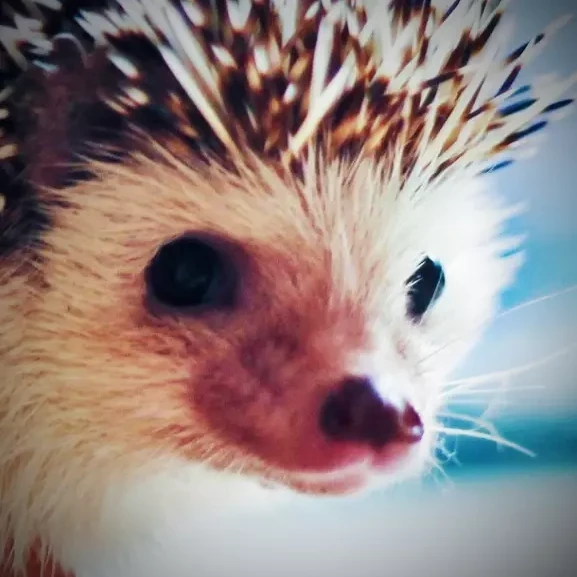The fastest human on the planet might be a quadrupedal runner at the 2048 Olympics, which may be achieved by shifting up to the rotary gallop and taking longer strides with wide sagittal trunk motion. More generally, investigation of quadrupedal running will not only result in the development of new techniques that allow biomechanists to study locomotion in natural settings but will also reveal the underlying principles of how these runners accomplish their astonishing performances.
So somehow the lesson is not “be careful with curve extrapolation,” but “extrapolating curves totally always works and so that’s my justification for this xkcd-level of weird nonsensical conclusion, now more funding pls”
The fastest end of the 95% confidence interval has quadrupedal humans doing 108 kmh / 67 mph in 2100, which would have us vying for the title of fastest animal on land. Seems about fucking right team good work
Hey everybody this guy’s over here questioning the curve
Get him
HERESY AGAINST DOCTRINE!
Nah bro, these 7 data points are trending downwards, therefore we can totally project with 95% confidence that humans will be running a sub-6 second 100m on all fours by the year 2100.
Ok I think I’m getting it. So if a human runs on all 8 legs it should be a 3-second 100m right?
The study covers an awful lot more than that. Even the posted excerpt discusses gait analysis and mechanics. Yes it’s a projection, but it’s hardly unfounded.
We plotted the historical world records for bipedal and quadrupedal 100-m sprint times according to competition year. These historical records were plotted using several curve-fitting procedures. We found that the projected speeds intersected in 2048, when for the first time, the winning quadrupedal 100-m sprint time could be lower, at 9.276 s, than the winning bipedal time of 9.383 s.
Video analysis revealed that in quadrupedal running, humans employed a transverse gallop with a small angular excursion.
These results suggest that in the future, the fastest human on the planet might be a quadrupedal runner at the 2048 Olympics.
I stand by my analysis. Statement #1 is fine, if a little bit wierd. Statement #2 doesn’t excuse or ameliorate the total cuckoo pants nonsense of statement #3, though.
If what’s the in study is somehow different – like if the first sentence is “obviously we’re not saying that extrapolating these two particular curves forward suggests the exact year when sagittal trunk motion will manage to overcome millions of years of evolutionary re-optimization away from quadrupedal gait, that would be insane” – then sure. But if that’s true, they should have written the abstract different.
Fair enough!
Can’t wait to try it in QWOP.
I imagine that would be really tough on your hands, unless you had weird shoe-like gloves.
Nike has entered the chat
Boxing gloves, with track cleats on the knuckles.
good luck with those wrists
Yeah, an olympic-class quadruped runner is going to have gorilla fists.
I think they would need a hard, form-fitting, elbow-length glove, to move as much force as possible off of the fingers and wrists.
If anyone’s interested in what it looks like: https://www.youtube.com/watch?v=F3h0AkNNP70
Huh, was expecting more leopard style
Found this related vsauce when looking for a video of how does it look to run qudrupedally
Those dead eyes at the end of the video
Removed by mod
That sounds correct 😅
I can run much faster quadrupedally, but I get exhausted faster too.
If you trained for it correctly, I bet a 100m dash would certainly win, but the marathon wouldn’t.
I think they specify that this applies over short distances. It looks at the 100m in particular.
Humans are bipedal cause we can outrun anything over long distances. Humans hunted animals by running them till they collapsed.
Are the Olympics ready for another Fosbury Flop?
I’ll believe it when I see it.
I’ll believe it when I see it.
I see it all the time in horror movies.

Lol!
May as well be an Onion article.I would love to see this become more common as a sport because the mechanics are just so different and so the strategies will be more diverse-- fun to be at the early stage of learning. The article suggests quadrupedal racers have not even been using the most efficient gait and many other optimizations may yet be realized, so I think their prediction is likely, but not really the point to me.
Not even close to the most efficient gait. The videos I’ve been watching, they are using their hands plantigrade rather than digitigrade. They should be on their fingertips or knuckles, not their palms, and be wearing something like boxing gloves with cleats to protect their knuckles rather than their palms.
Their gaits are nearly symmetric: opposite limbs are contacting the ground at about the same time, much like a horse’s trot rather than its gallop. Their asses are always high in the air, and their heads down; they are running like raccoons.
If you look at canine or feline running gaits, they rarely have more than one foot on the ground at any one time. Whenever one foot hits the ground, the other three are moving forward. They are making extensive use of the flexibility of their spine to lengthen their effective stride.
I noticed the runner used a bipedal start off traditional running blocks. Head down, legs bent, crouched forward, held back behind the line with straight arms. If you watch a dog, cat, horse, etc, as it starts to run, it is digging in with all four limbs, not just the hind legs.
I think in a quadrupedal race, the runner would want to be able to pull themselves forward with their arms as well as push themselves forward with their legs. That doesn’t make sense for a bipedal runner, as that extra performance off the line comes with the penalty of extra upper body mass through the entire race. But a quadrupedal runner is going to need that mass/strength through the entire race.
I’d think they would want a modified starting block for their hands as well as one for their legs.
It would be fun. i assumed the vids online would show more of a greyhound running technique, so was disappointed by the guys odd run
i doubt it, despite how it is for that one outlier. try it and see.








